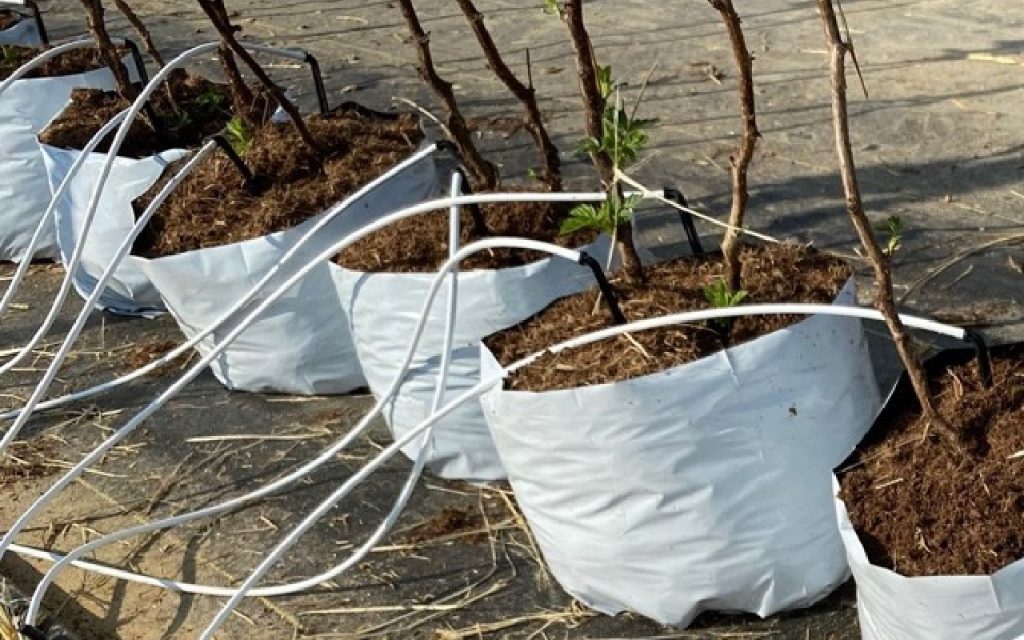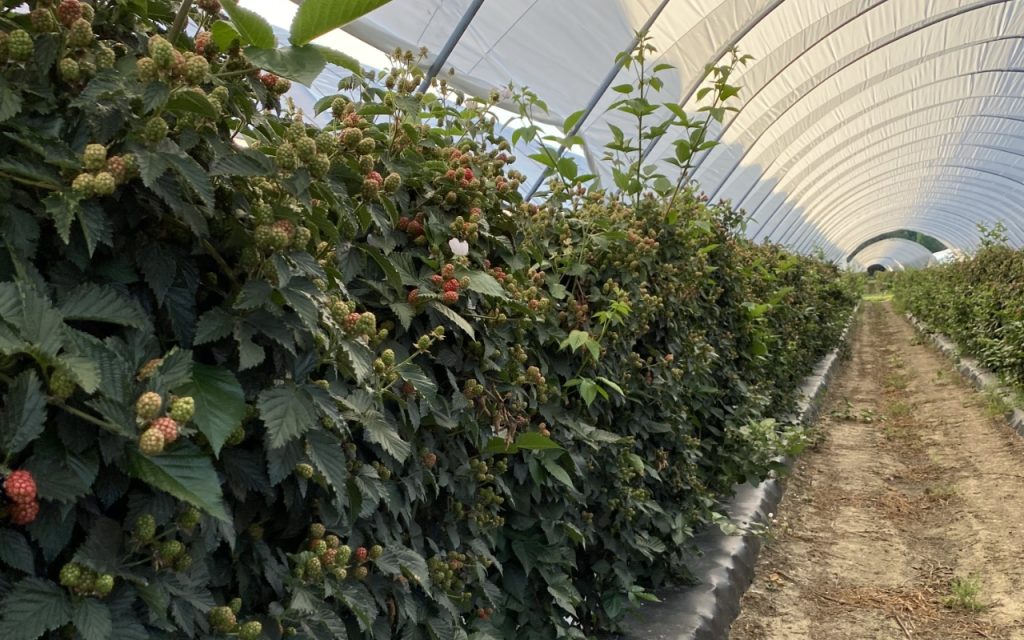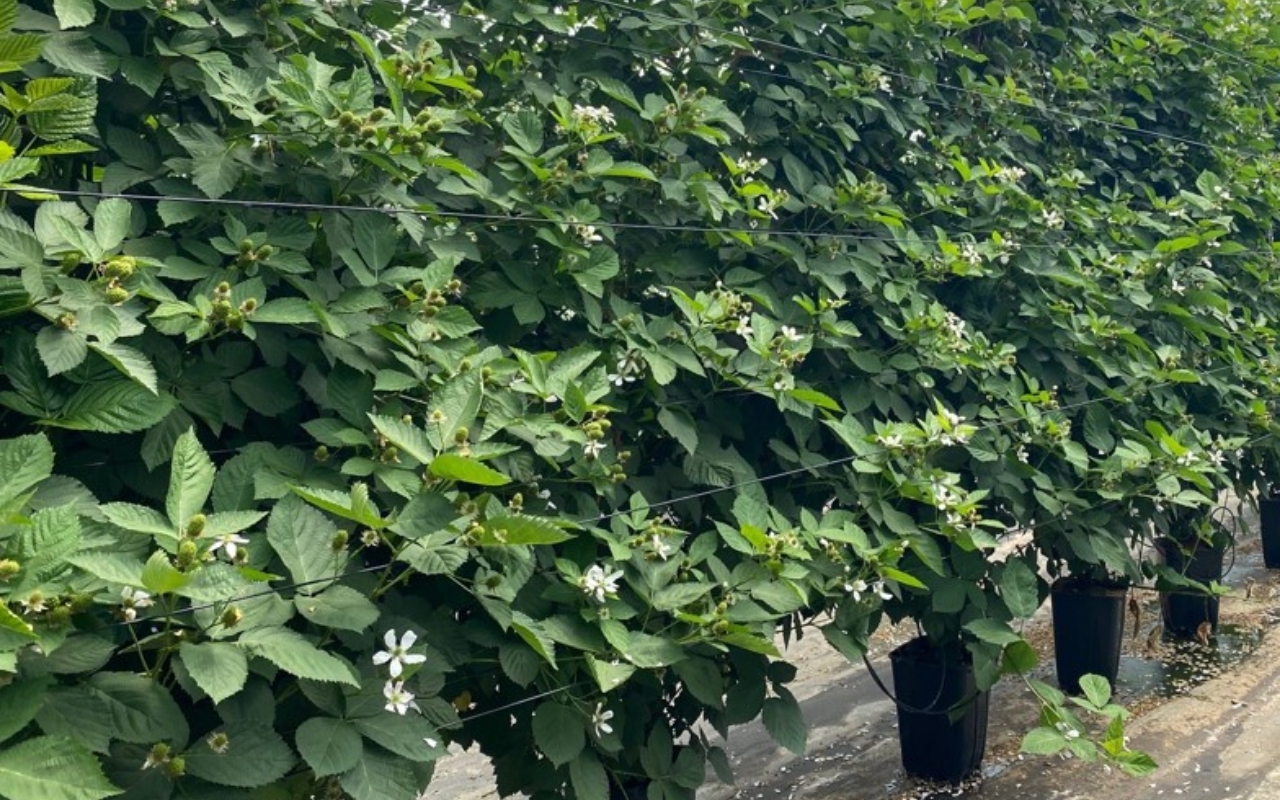The Comparison
Traditional soil production for soft fruit crops is a buffered system that is slow to change, whether good or bad. Fertigation mistakes in a traditional soil system isn’t necessarily going to be detrimental, or result is major pH or nutrient changes. For the same reasons, soil deficiencies or incorrect pH ranges are more difficult to correct in traditional systems.
The difference in a substrate system is significant. It is a low volume potted container area that is essentially fed by an IV nutrient solution, so fertigation changes can result in major nutrient or pH shifts within a matter of hours. So, this situation is both good and bad – you can correct your mistakes very quickly and you can make mistakes very quickly. Think of substrate as a high risk, high reward type system where your attention to detail is very important.
Moving forward with those differences in growing systems pointed out let’s lay out some key ideas for growing.


Plant Nutrition and PH
Starting with the right pH is key in a soil system for berries, or you’ll be fighting it all season long, but impact in season is minimal with the right fertility program. Most soil systems are high volume of fertilizers and water, with low frequency of runs for irrigation and fertigation. Fertility in soil systems are referred to in terms of pounds per acre. The southeast typically has programs of 150-30-200#/acre NPK with 30-50# S and 40-50# Ca. Fertigation is supplied commonly with potassium nitrate/calcium nitrate/UAN style blends (a 5-1-7 with 2% Ca for example). We do a lot of these type blends in traditional soil production of soft fruit, with sulfur being supplied as a supplement.
In a substrate system, the program is the opposite of a soils system. Low volume and high frequency systems run typically for 2-3 minutes at a time 20-30 times daily. Fertigation is driven by PPM (parts per million) to target crops by each stage every irrigation cycle. Fertility isn’t driven by pounds of nutrient applied per acre, but crop demand of a balanced nutrient solution based on irrigation needs. It is also critical to realize that rapid pH manipulation is possible through water treatment and fertilizer selection. Just think about the size of the pot and the tight area the plant is in. So, as a grower, you have to re-calibrate yourself in this type of system to be more targeted and understand how quickly changes can be made.
Water Quality
Water quality is the first factor in determining a proper nutrient and irrigation plan for a substrate crop. Well, municipal, and surface water is variable and should be regularly tested for pH, EC, and iron. Managing pH is very important particularly in substrate systems as highlighted earlier. Making assumptions about your source water can lead to big mistakes, test first.
Injection Systems and Fertilizer Sources
When you look at injection systems to create a fertility base like we’ve been discussing it is generally a two-stage injection system that will allow growers to run one tank that is calcium based and another being sulfur based. Calcium and sulfur don’t play nice as fertilizer concentrates, so this split is the most natural way to begin your fertility program. Both tanks can be run as a diluted mix simultaneously, pending quality and dilution rate.
Nutrient form matters! The form you choose to use can have a large impact on your pH (especially nitrogen). Water-soluble blends are the recommended best option for a substrate system due to the ability for customization. Drip grade liquid fertilizers are an option with reduced labor, but it can’t be customized as much, as the scale for drip fertigation is much larger and is made in greater quantities typically. There are many options to find the same end goal for nutrition, as long as the product form/ratios are correct.
Last Thoughts
There are a lot of factors that need to be monitored in both substrate and soil systems. You can go from a very simple, labor intensive style to monitor pH, water quality, nutrients, and E/C which does work or you can start adding layers of sensors and automation. To learn more you can reach out to our team and they can help you research solutions that will work best for you and your substrate production needs.
